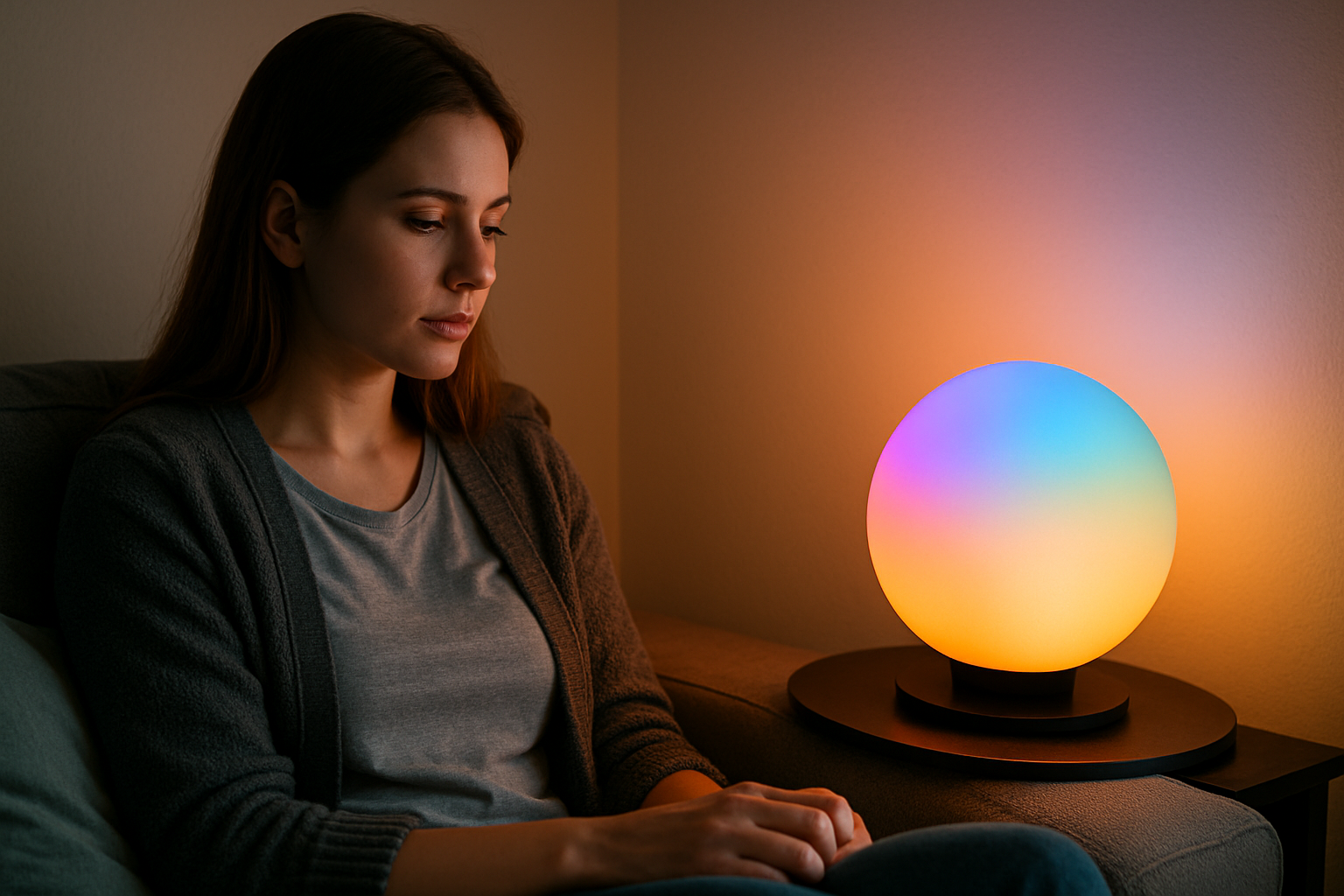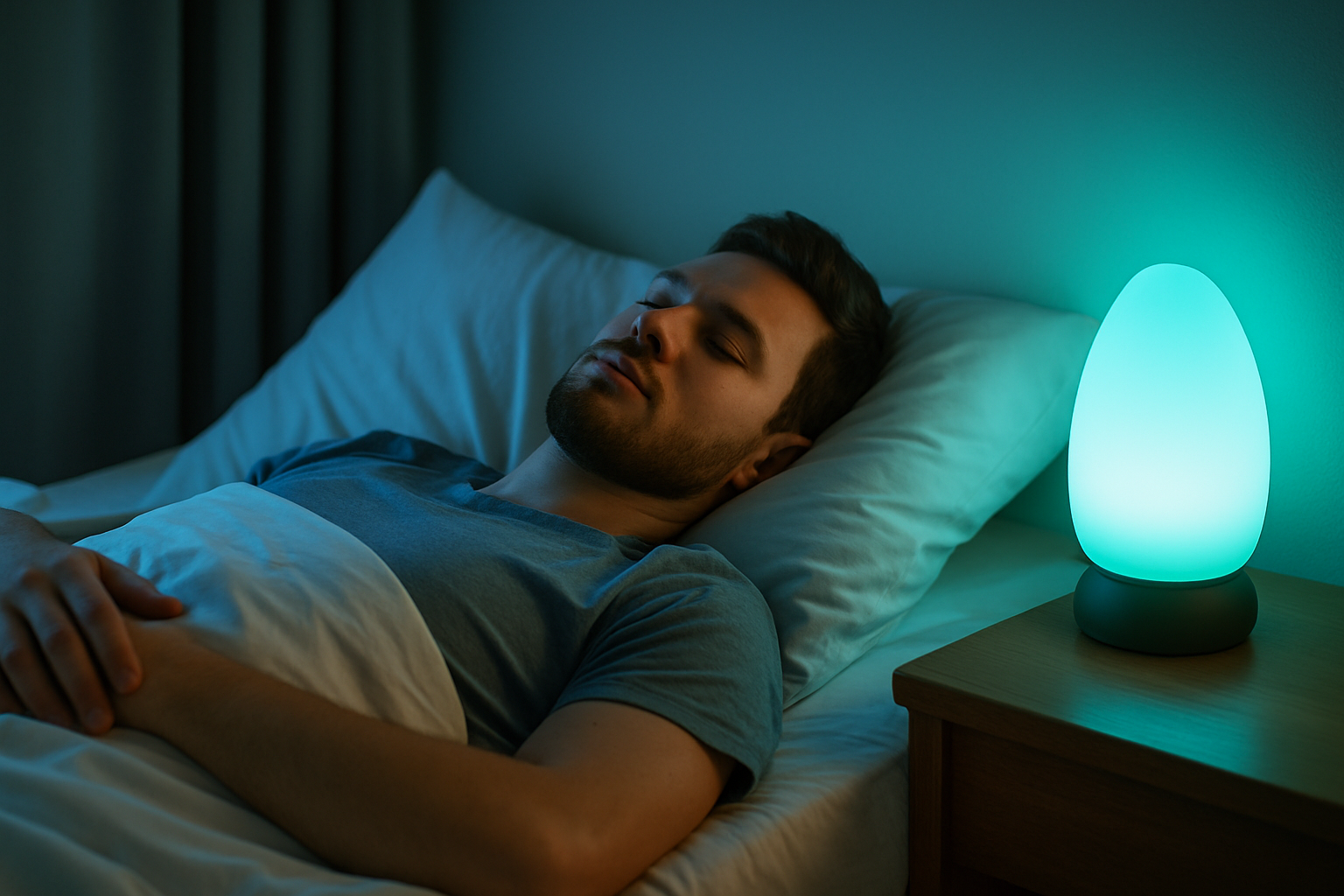Imagine coming home after a long day. You step into your room, and without touching a button, your lamp glows in soft blue tones. You feel calmer. More at peace. That’s not just a bulb—it’s a smart mood lamp, reacting to your emotional state in real time.
This technology is no longer part of a distant future. It’s here, and it’s already transforming the way we experience light in our homes. In the same way the Chicken Road game adds unexpected fun to a simple concept, mood lamps make everyday lighting more personal, interactive, and meaningful.

What Is a Mood Lamp?
A mood lamp is more than just a color-changing light. It’s a device designed to respond to your emotional cues. Whether it’s through your voice, facial expressions, movements, or even heart rate, it reads subtle signals and adapts its glow accordingly.
Some lamps use built-in sensors. Others pair with apps or wearable devices to collect emotional data. Based on this, they adjust their brightness, hue, and even flicker rate to reflect your feelings—or gently influence them.
For example:
- Feeling stressed? The lamp shifts to soft greens or blues.
- Full of energy? It lights up with bold reds or oranges.
- Tired or sad? Expect warm yellows or low, golden tones.
How It Works
The core technology behind mood lamps includes AI, smart sensors, and ambient light design. Some models scan your facial expressions using built-in cameras. Others rely on data from smartwatches, heart-rate monitors, or voice assistants.
Here’s a breakdown of how these systems typically function:
- Input Detection – Sensors read your tone of voice, movement, or biometric data.
- Emotional Analysis – AI interprets your emotional state using real-time algorithms.
- Lighting Response – The lamp chooses a color and brightness level to either match or balance your mood.
- Feedback Loop – Over time, the system learns your patterns and adjusts automatically.
It sounds complex, but the user experience is smooth. You simply walk into a room, and the lamp “knows” what to do.
Why Mood Lamps Matter
You might ask, “Why does the color of a lamp matter so much?”
The truth is, light affects us more than we realize. It shapes our mood, focus, and sleep. With mood-responsive lighting, you're not just seeing better—you’re feeling better.
Let’s look at some real benefits:
- Stress Reduction – Soothing colors lower heart rate and calm the mind.
- Better Sleep – Dimming lights in the evening signal your body to produce melatonin.
- Increased Productivity – Bright white light can boost concentration and alertness.
- Emotional Regulation – Gentle color shifts help you become more aware of your feelings.

Who Is Using Mood Lamps?
Mood lamps aren’t just for gadget lovers. Their uses are expanding across various spaces and needs:
- Home offices – People working remotely use mood lighting to switch between work and relaxation.
- Kids’ rooms – Soft, reactive light helps children feel safe and improves sleep routines.
- Yoga and meditation spaces – Color cues enhance focus and emotional presence.
- Therapy and wellness centers – Lamps provide emotional support without words.
Even hospitality businesses are exploring mood lamps to improve guest experience in hotels and lounges.
How to Choose the Right Lamp
Not all mood lamps are created equal. Some offer basic presets, while others learn and grow with you.
Here’s what to consider when choosing one:
- Sensor Type – Look for lamps that use more than just manual controls. Options with voice, camera, or biometric input are more immersive.
- Color Range – A wide palette gives more emotional flexibility.
- App Control – Having mobile access lets you customize and monitor settings.
- Integration – If you use Alexa, Google Home, or Apple HomeKit, check compatibility.
- Design – Since it’s a visible item, choose something that matches your room’s aesthetic.
Many popular models also include scheduling features, so you can automate the mood throughout the day.
Tips for Using Mood Lighting Effectively
You’ve got the lamp. Now what?
Here are a few tips to make the most of it:
- Sync it with your daily rhythm – Set it to energize you in the morning and calm you at night.
- Pair with music – Some lamps adjust to beats or lyrics, enhancing emotional feedback.
- Use in short sessions – Just 20–30 minutes of calming light can reset your mood.
- Turn off other lights – Let the mood lamp be the only source to create focus.
Experiment. Adjust. Observe how your space and emotions shift together.
Final Thoughts
Mood lamps are more than smart gadgets. They’re companions. They respond to you. They support your energy, attention, and emotional balance—quietly and beautifully.
In a world that feels increasingly fast and digital, a light that listens to how you feel is a welcome pause. It reminds you that your environment can adapt to you, not the other way around.
So, whether you're looking to add ambiance to your room or support your mental well-being in a subtle way, a mood-responsive lamp might just be the brightest idea yet.







